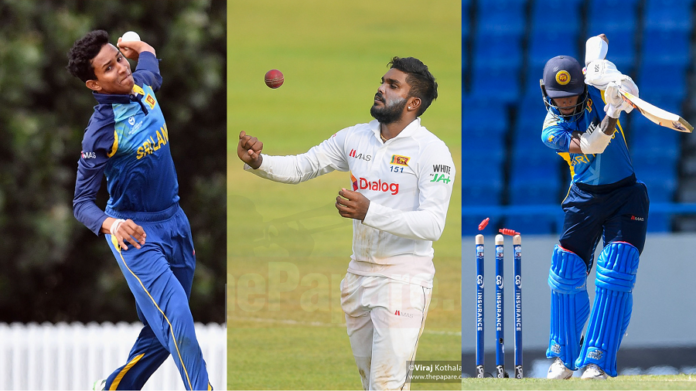Watching Sri Lankan cricket these days is a tedious affair. Not just because the team is losing but there are some blunders that could have been easily avoided.
You cannot hope that a player will be a good prospect in white ball cricket simply because he has excelled in red ball cricket. Effectively, you are destroying his confidence when he is unable to transfer the success from one format to the other.
The same can be said of T20 specialists who are played in ODIs. Take the case of Dhananjaya Lakshan, who is an excellent T20 player. In England he was warming the bench during the T20s and suddenly pushed into a debut at Chester-le-Street in the first ODI. He sent down just two overs and was then chucked out of the side after that. Here’s a pertinent question that the selectors and the team management needs to ask. Has Dhananjaya Lakshan bowled ten overs in a one-day game for Colts?
There is then Ramesh Mendis, who had been identified as a limited overs player. But he seems to be getting more opportunities these days in red ball cricket than the shorter formats.
Another young sensation is left-arm spinner Praveen Jayawickrama, who became a star overnight after claiming 11 wickets on debut. Now, ideally, at this moment you should use young Praveen only in Test match cricket. By playing him in white ball cricket he is going to lose his rhythm. He has been rushed into the limited overs side. He should have been kept away from the shorter formats.
Praveen bowled just one over in Chester-le-Street and that was it for him in the shorter formats. All that confidence built up at Pallekele during his debut Test match is gone and now he must be wondering whether he is good enough in white ball cricket.
The same blunder was committed with Pathum Nissanka. It was such a dream start for him in the Caribbean where he made a hundred on debut. Since then, he has struggled to find his feet. His last four scores in ODI cricket have been restricted to single digits. In all, he has managed 16 runs in four innings.
The problem lies with the system. When the selectors are changed, the new lot who take over think that their predecessors have been doing it all wrong and they start experimenting with new things. By the time they get a hang of things, it is too late for them to implement their bright ideas. Something that ought to happen is that when selection panels are changed, at least one guy from the previous panel needs to be retained for continuity sake.
Another thing that should happen is that a dialogue should start between the selectors and the High Performance Center coaches. Those guys at RPS have so much knowledge and having worked with the players around the clock, know quite well what to expect of them.
Take the case of Akila Dananjaya. When he was a chosen to make his Test debut in 2018, those coaches at HPC warned that this experimentation could backfire. It was felt that when Akila has to bowl long spells in Test match cricket, fatigue would take to him and it was only a matter of time before he faulted with his action.
As predicted, Akila got into trouble during the England series later that year and was suspended. Today, after remodeling his action, the quality of his off-spin is nowhere near what it used to be. His off-spin hardly turns these days and it could turn up to be a disaster if he is chosen to play 50 over format.
Another player who has been played in the wrong format is Wanindu Hasaranga. People suddenly expected him to transform his success in the shorter formats of the game to Test cricket as well. Wanindu is a unique guy. He is not the classical leg-spinner. He bamboozles batsmen with his googly, but much work has to be done on his leg-spin. Basically, his leg-spin doesn’t spin as much as you would like. It is when the ball is going either way that the batsmen will struggle.
So, we know that Wanindu’s googly is hard to pick. Now there’s another problem. Who is going to keep wickets? With Kusal Perera ruled out of the series with injury, the Colombo bubble does not have a wicket-keeper.
All wicket-keepers; Minod Bhanuka, Sadeera Samarawickrama, Lahiru Udara and Kamil Mishara have been in the Dambulla bubble and they have to be rushed from North Central province to RPS less than 48 hours before the first ODI. Hardly the preparation needed for wicket-keepers who are new to the international stage.
At least you can be glad that the authorities were sensible to create a bubble in Dambulla and kept players occupied. The planning, however, had to be much better than this. Some of the keepers should have been brought down to Colombo as cover as you knew from the moment the ODI at The Oval concluded that KJP was struggling to be fit.













